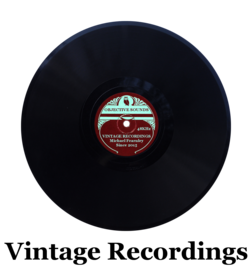
"The Piano Concerto No. 23 in A major (K. 488) is a musical composition for piano and orchestra written by Wolfgang Amadeus Mozart. It was finished, according to Mozart's own catalogue, on March 2, 1786, around the time of the premiere of his opera, The Marriage of Figaro. It was one of three subscription concerts given that spring and was probably played by Mozart himself at one of these.
The concerto is scored for piano solo and an orchestra consisting of one flute, two clarinets, two bassoons, two horns and strings. In Mozart's later works the wind instruments are equal to the stringed instruments, and this is also the case in this concerto."
| Composer | Wolfgang Amadeus Mozart |
|---|---|
| Work | Piano Concerto No. 23 in A major, K. 488 |
| Pianist | Arthur Rubinstein |
| Orchestra | The London Symphony Orchestra |
| Conductor | John Barbirolli |
| Date Recorded | 8-9th January 1931 |
| Recording Location | Kingsway Hall, London |
| Date Restored | 6th February 2016 |
| Serial Numbers | HMV DB7217-9 |
| Recording Cutter | Western Electric type 1B |
| Bandwidth | 50Hz to 6.5kHz |
| Transfer Stylus | 2.8 mil truncated elliptical |
| Transfer Cartridge | Stanton 500 at 5g |
| Transfer Turntable | Hitachi HT-350 at 78RPM |
| Cutter Compensation | 250Hz first order lift down to 40Hz |
| Click Reduction | DeClick, wavelet mode, 68, 2 passes |
| Crackle Reduction | DeCrackle, wavelet mode, 65, 3 passes |
| Low Frequency NR | DeNoise LF, mono, 150Hz, -45dB |
| Wideband NR | DeNoiseExp, residual noise floor -55dB, max reduction -15dB |
| Limiting Filter | 48dB/octave Butterworth, at bandwidth limits |
| Additional Eq. | Western Electric microphone compensation |
Recorded by HMV at Kingsway Hall in early 1931, this performance was probably one of the last few captured using the rather limited Western Electric type 1B cutter before the company switched to its own patent circumventing copy, which was used briefly until the Blumlein cutter became available in 1932. As such, the bandwidth is rather limited, with the treble response falling away rather sharply at 5.5kHz (the resonant frequency of the cutter), but there is a little information left up around 6.5kHz. The instantly recognisable acoustics of Kingsway Hall are readily heard on this recording, but thankfully none of the trademark rumble, being situated above the London Underground seems to have seeped into the recording. It is the opinion of the author of this page that this recording is an excellent one, especially as it's over 85 years old at the time of writing!
This is the first full restoration of a classical work that I have completed using an experimental version of Brian Davies' DeNoise software that allows the user to set a residual noise floor, that stays constant as the noise floor on the recording itself changes, due to the decreasing linear velocity of the groove towards the end of each side on 78s. Using this feature along with automatic tracking, a greater level of reduction can be used without causing any unpleasant artifacts, while keeping the output noise constant, resulting in the edits made when a side change occurs becoming much less conspicuous.
This is the first transfer and restoration that I can offer for download, and as it's out of copyright (and the author thinks of himself as generous), it's completely free of charge.
I have decided to use Q7 Vorbis for site downloads, instead of MP3 or even FLAC, as it is just as well supported as of 2016, and provides transparency at about a third of the file size. There isn't really much point, in the opinion of the author, for using FLAC as the final listening format (all processing is done losslessly, of course) as the quality of the recordings themselves is rather limited given their age. The general consensus on HydrogenAudio is that Q5 is enough for transparency, so the downloads offered are encoded at a more than ample Q7. Vorbis is by far a superior codec to MP3, as transparency is obtained at almost half the bit-rate while gapless playback, a deal breaker in this case as the work is split into movements, is also available.
The audio tracks listed on this page are digital restorations of 78 RPM records in my possession, whose mechanical copyright has expired before the time of this pages publication. No later release is used so any copyright affecting such a release does not apply to any of the sound recordings shown on this page. Claims to the contrary may be vexatious if pursued. Any communication between parties claiming copyright of the material on this website and the author of this site will be published immediately with great derision. The contents of this page must not be copied represented or sold without express permission.
Michael Fearnley 2016